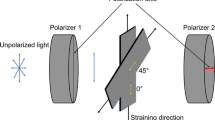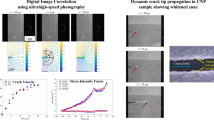Abstract
Cellulose, the abundantly available and sustainable biopolymer, exhibits intrinsic mechanical properties superior to many high-performance structural materials. The exceptional mechanical properties of cellulose-based materials inherently hinge upon their bottom-up hierarchical material structure starting from cellulose molecular chains to large scale fibers. However, fully atomistic simulation of such materials at experimental sample dimension becomes computationally prohibitive for the exploration of mechanics involving length scale effects. To address this challenge, here we develop a bottom-up, scalable coarse-grained (CG) modeling scheme of cellulose materials to study the deformation and failure mechanism of cellulose-based materials with insight of the interplay among cellulose building blocks at different length scales, starting from molecular chain, to nanofiber, and finally to microfiber scales. After studying the response of cellulose fibers under different loadings such as shearing and opening, this CG scheme is applied to study the deformation process of a cellulose nanopaper under tension, thus revealing the nanoscale failure mechanism otherwise impossible by atomistic simulations. In addition, the CG model also predicts the strength and stiffness of the nanopaper with respect to varying fiber lengths. Given its scalable nature, such a CG modeling scheme can be readily adapted to study the mechanical behaviors of other cellulose-based materials with mechanistic insight from molecular scale, and thus holds promise to foster the design of cellulose-based high-performance materials.





Similar content being viewed by others
References
Ahmed M, Azizi S, Alloin F, Dufresne A (2005) Review of recent research into cellulosic whiskers, their properties and their application in nanocomposite field. Biomacromolecules 6:612–626. https://doi.org/10.1021/bm0493685
Boda D, Henderson D (2008) The effects of deviations from Lorentz-Berthelot rules on the properties of a simple mixture. Mol Phys 106:2367–2370. https://doi.org/10.1080/00268970802471137
Buzio R, Calvini P, Ferroni A, Valbusa U (2004) Surface analysis of paper documents damaged by foxing. Appl Phys A Mater Sci Process 79:383–387. https://doi.org/10.1007/s00339-004-2540-2
Chen C, Kuang Y, Zhu S et al (2020) Structure–property–function relationships of natural and engineered wood. Nat Rev Mater. https://doi.org/10.1038/s41578-020-0195-z
Czaja WK, Young DJ, Kawecki M, Brown RM (2007) The future prospects of microbial cellulose in biomedical applications. Biomacromolecules 8:1–12. https://doi.org/10.1021/bm060620d
Diaz JA, Ye Z, Wu X et al (2014) Thermal conductivity in nanostructured films: from single cellulose nanocrystals to bulk films. Biomacromolecules 15:4096–4101. https://doi.org/10.1021/bm501131a
Domingues RMA, Gomes ME, Reis RL (2014) The potential of cellulose nanocrystals in tissue engineering strategies. Biomacromolecules 15:2327–2346. https://doi.org/10.1021/bm500524s
Dufresne A (2017) Cellulose nanomaterial reinforced polymer nanocomposites. Curr Opin Colloid Interface Sci 29:1–8. https://doi.org/10.1016/j.cocis.2017.01.004
Fan B, Maranas JK (2015) Coarse-grained simulation of cellulose Ib with application to long fibrils. Cellulose 22:31–44. https://doi.org/10.1007/s10570-014-0481-2
Fan K, Hatzikiriakos SG, Avramidis S (1999) Determination of the surface fractal dimension from sorption isotherms of five softwoods. Wood Sci Technol 33:139–149. https://doi.org/10.1007/s002260050105
Fang Z, Hou G, Chen C, Hu L (2019) Nanocellulose-based films and their emerging applications. Curr Opin Solid State Mater Sci 23:100764. https://doi.org/10.1016/j.cossms.2019.07.003
Fang Z, Zhu H, Yuan Y et al (2014) Novel nanostructured paper with ultrahigh transparency and ultrahigh haze for solar cells. Nano Lett 14:765–773. https://doi.org/10.1021/nl404101p
Goutianos S, Mao R, Peijs T (2018) Effect of inter-fibre bonding on the fracture of fibrous networks with strong interactions. Int J Solids Struct 136–137:271–278. https://doi.org/10.1016/j.ijsolstr.2017.12.020
Guan QF, Bin Yang H, Han ZM et al (2020) Lightweight, tough, and sustainable cellulose nanofiber-derived bulk structural materials with low thermal expansion coefficient. Sci Adv 6:1–9. https://doi.org/10.1126/sciadv.aaz1114
Hou Y, Guan Q, Xia J et al (2020) Strengthening and toughening hierarchical nanocellulose via humidity-mediated interface. ACS Nano. https://doi.org/10.1021/acsnano.0c08574
Ioelovich M (2008) Cellulose as a nanostructured polymer: a short review. BioResources 3(4):1403–1418
Isaksson P, Hägglund R (2009) Structural effects on deformation and fracture of random fiber networks and consequences on continuum models. Int J Solids Struct 46:2320–2329. https://doi.org/10.1016/j.ijsolstr.2009.01.027
Izvekov S, Voth GA (2005) A multiscale coarse-graining method for biomolecular systems. J Phys Chem B 109:2469–2473. https://doi.org/10.1021/jp044629q
Jia C, Chen C, Kuang Y et al (2018) From wood to textiles : top-down assembly of aligned cellulose nanofibers. Adv Mater 30:1801347. https://doi.org/10.1002/adma.201801347
Kalia S, Dufresne A, Cherian BM et al (2011) Cellulose-based bio- and nanocomposites: a review. Int J Polym Sci 2011:1–35. https://doi.org/10.1155/2011/837875
Klemm D, Heublein B, Fink H-P, Bohn A (2005) Cellulose: fascinating biopolymer and sustainable raw material Angewandte. Angew Chemie Int Ed 44:3358–3393. https://doi.org/10.1002/anie.200460587
Koňas P, Buchar J, Severa L (2009) Study of correlation between the fractal dimension of wood anatomy structure and impact energy. Eur J Mech A/Solids 28:545–550. https://doi.org/10.1016/j.euromechsol.2008.07.005
Li T, Zhai Y, He S et al (2019) A radiative cooling structural material. Science (80-) 364:760–763. https://doi.org/10.1126/science.aau9101
Li T, Zhu M, Yang Z et al (2016) Wood composite as an energy efficient building material : guided sunlight transmittance and effective thermal insulation. Adv Energy Mater 6:1601122. https://doi.org/10.1002/aenm.201601122
Li Y, Zhu H, Wang Y, Ray U et al (2017) Cellulose-nanofiber-enabled 3D printing of a carbon-nanotube microfiber network. Small Methods 1:1700222. https://doi.org/10.1002/smtd.201700222
Li Y, Zhu H, Zhu S et al (2015) Hybridizing wood cellulose and graphene oxide toward high-performance fibers. NPG Asia Mater 7:e150. https://doi.org/10.1038/am.2014.111
Mao R, Goutianos S, Tu W et al (2017) Modelling the elastic properties of cellulose nanopaper. Mater Des 126:183–189. https://doi.org/10.1016/j.matdes.2017.04.050
Mattsson TR, Lane JMD, Cochrane KR et al (2010) First-principles and classical molecular dynamics simulation of shocked polymers. Phys Rev B 81:054103. https://doi.org/10.1103/PhysRevB.81.054103
Mehandzhiyski AY, Rolland N, Garg M et al (2020) A novel supra coarse-grained model for cellulose. Cellulose 27:4221–4234. https://doi.org/10.1007/s10570-020-03068-y
Meng Q, Li B, Li T, Feng X (2017) A multiscale crack-bridging model of cellulose nanopaper. J Mech Phys Solids 103:22–39. https://doi.org/10.1016/j.jmps.2017.03.004
Meng Q, Wang TJ (2019) Mechanics of strong and tough cellulose nanopaper. Appl Mech Rev 71:040801. https://doi.org/10.1115/1.4044018
Moon RJ, Martini A, Nairn J et al (2011a) Cellulose nanomaterials review: Structure, properties and nanocomposites
Moon RJ, Martini A, Nairn J, Youngblood J (2011) Cellulose nanomaterials review: structure, properties and nanocomposites. Chem Soc Rev 40:3941–3994. https://doi.org/10.1039/c0cs00108b
Motamedian HR, Halilovic AE, Kulachenko A (2019) Mechanisms of strength and stiffness improvement of paper after PFI refining with a focus on the effect of fines. Cellulose 26:4099–4124. https://doi.org/10.1007/s10570-019-02349-5
Müller FA, Müller L, Hofmann I et al (2006) Cellulose-based scaffold materials for cartilage tissue engineering. Biomaterials 27:3955–3963. https://doi.org/10.1016/j.biomaterials.2006.02.031
Ogawa Y (2019) Electron microdiffraction reveals the nanoscale twist geometry of cellulose nanocrystals. Nanoscale 11:21767–21774. https://doi.org/10.1039/c9nr06044h
Plimpton S (1995) Fast parallel algorithms for short-range molecular dynamics. J Comput Phys 117:1–19
Qin X, Feng S, Meng Z, Keten S (2017) Optimizing the mechanical properties of cellulose nanopaper through surface energy and critical length scale considerations. Cellulose 24:3289–3299. https://doi.org/10.1007/s10570-017-1367-x
Ray U, Zhu S, Pang Z, Li T (2020) Mechanics design in cellulose-enabled high-performance functional materials. Adv Mater 2002504:1–22. https://doi.org/10.1002/adma.202002504
Redinz JA, Guimarães PRC (1997) The fractal nature of wood revealed by water absorption. Wood Fiber Sci 29:333–339
Rouhi S (2019) On the mechanical properties of the graphdiyne nanotubes: a molecular dynamics investigation. Braz J Phys 49:654–666. https://doi.org/10.1007/s13538-019-00673-6
Saito T, Kuramae R, Wohlert J et al (2013) An ultrastrong nanofibrillar biomaterial: the strength of single cellulose nanofibrils revealed via sonication-induced fragmentation. Biomacromolecules 14:248–253. https://doi.org/10.1021/bm301674e
Sehaqui H, Zhou Q, Ikkala O, Berglund LA (2011) Strong and tough cellulose nanopaper with high specific surface area and porosity. Biomacromolecules 12:3638–3644. https://doi.org/10.1021/bm2008907
Shin S, Hyun J (2017) Matrix-assisted three-dimensional printing of cellulose nanofibers for paper microfluidics. ACS Appl Mater Interfaces 9:26438–26446. https://doi.org/10.1021/acsami.7b07609
Shishehbor M, Zavattieri PD (2019) Effects of interface properties on the mechanical properties of bio-inspired cellulose nanocrystal (CNC)-based materials. J Mech Phys Solids 124:871–896. https://doi.org/10.1016/j.jmps.2018.12.002
Sinko R, Keten S (2015) Traction – separation laws and stick—slip shear phenomenon of interfaces between cellulose nanocrystals. J Mech Phys Solids 78:526–539. https://doi.org/10.1016/j.jmps.2015.02.012
Sinko R, Mishra S, Ruiz L et al (2014) Dimensions of biological cellulose nanocrystals maximize fracture strength. ACS Macro Lett 3:64–69. https://doi.org/10.1021/mz400471y
Song J, Chen C, Yang Z et al (2018) Highly compressible, anisotropic aerogel with aligned cellulose nanofibers. ACS Nano 12:140–147. https://doi.org/10.1021/acsnano.7b04246
Song J, Chen C, Zhu S et al (2018) Processing bulk natural wood into a high-performance structural material. Nature 554:224–228. https://doi.org/10.1038/nature25476
Srinivas G, Cheng X, Smith JC (2011) A solvent-free coarse grain model for crystalline and amorphous cellulose fibrils. J Chem Theory Comput 7:2539–2548. https://doi.org/10.1021/ct200181t
Svensson A, Nicklasson E, Harrah T et al (2005) Bacterial cellulose as a potential scaffold for tissue engineering of cartilage. Biomaterials 26:419–431. https://doi.org/10.1016/j.biomaterials.2004.02.049
Sydney Gladman A, Matsumoto EA, Nuzzo RG et al (2016) Biomimetic 4D printing. Nat Mater 15:413–418. https://doi.org/10.1038/nmat4544
Szymanska-Chargot M, Chylinska M, Gdula K et al (2017) Isolation and characterization of cellulose from different fruit and vegetable pomaces. Polymers (Basel). https://doi.org/10.3390/polym9100495
Usov I, Nyström G, Adamcik J et al (2015) Understanding nanocellulose chirality and structure-properties relationship at the single fibril level. Nat Commun. https://doi.org/10.1038/ncomms8564
Wang S, Jiang F, Xu X et al (2017) Super-strong, super-stiff macrofibers with aligned, long bacterial cellulose nanofibers. Adv Mater 29:1702498(1–8). https://doi.org/10.1002/adma.201702498
Wang S, Li T, Chen C et al (2018) Transparent, anisotropic biofilm with aligned bacterial cellulose nanofibers. Adv Funct Mater 28:1707491(1–10). https://doi.org/https://doi.org/10.1002/adfm.201707491
Wang X, Pang Z, Chen C et al (2020) All-natural, degradable, rolled-up straws based on cellulose micro- and nano-hybrid fibers. Adv Funct Mater 30:1–9. https://doi.org/10.1002/adfm.201910417
Wu X, Moon RJ, Martini A (2013) Crystalline cellulose elastic modulus predicted by atomistic models of uniform deformation and nanoscale indentation. Cellulose 20:43–55. https://doi.org/10.1007/s10570-012-9823-0
Wu X, Moon RJ, Martini A (2014) Tensile strength of Iβ crystalline cellulose predicted by molecular dynamics simulation. Cellulose 21:2233–2245. https://doi.org/10.1007/s10570-014-0325-0
Xia W, Qin X, Zhang Y et al (2018) Achieving enhanced interfacial adhesion and dispersion in cellulose nanocomposites via amorphous interfaces. Macromolecules 51:10304–10311. https://doi.org/10.1021/acs.macromol.8b02243
Yousefi H, Faezipour M, Hedjazi S et al (2013) Comparative study of paper and nanopaper properties prepared from bacterial cellulose nanofibers and fibers/ground cellulose nanofibers of canola straw. Ind Crops Prod 43:732–737. https://doi.org/10.1016/j.indcrop.2012.08.030
Zhang Q, Chen C, Chen W et al (2019) Nanocellulose-enabled, all-nanofiber, high-performance supercapacitor. ACS Appl Mater Interfaces 11:5919–5927. https://doi.org/10.1021/acsami.8b17414
Zhang Y, Luo W, Wang C et al (2017) High-capacity, low-tortuosity, and channel-guided lithium metal anode. Proc Natl Acad Sci USA 114:3584–3589. https://doi.org/10.1073/pnas.1618871114
Zhou Y, Chen C, Zhu S et al (2019) A printed, recyclable, ultra-strong and ultra-tough graphite structural material. Mater Today 30:17–25
Zhu H, Fang Z, Preston C et al (2014) Transparent paper: fabrications, properties, and device applications. Energy Environ Sci 7:269–287. https://doi.org/10.1039/c3ee43024c
Zhu H, Zhu S, Jia Z et al (2015) Anomalous scaling law of strength and toughness of cellulose nanopaper. PNAS 112:8971–8976. https://doi.org/10.1073/pnas.1502870112
Zhu M, Song J, Li T et al (2016) Highly anisotropic, highly transparent wood composites. Adv Mater 28:5181–5187. https://doi.org/10.1002/adma.201600427
Zhu M, Wang Y, Zhu S et al (2017) Anisotropic, transparent films with aligned cellulose nanofibers. Adv Mater 29:1606284(1–8). https://doi.org/https://doi.org/10.1002/adma.201606284
Zhu S, Huang Y, Li T (2014) Extremely compliant and highly stretchable patterned graphene. Appl Phys Lett. https://doi.org/10.1063/1.4874337
Acknowledgements
We acknowledge the University of Maryland supercomputing resources (http://hpcc.umd.edu) and Maryland Advanced Research Computing Center (MARCC) made available for conducting the research reported in this paper. The authors acknowledge the support of US National Science Foundation (Grant Nos.1362256, 1936452).
Author information
Authors and Affiliations
Corresponding authors
Ethics declarations
Conflict of interest
The authors declare that they have no conflict of interest.
Additional information
Publisher’s Note
Springer Nature remains neutral with regard to jurisdictional claims in published maps and institutional affiliations.
Supplementary Information
Below is the link to the electronic supplementary material.
Supplementary file 2 (AVI 10,124 kb)
Supplementary file 3 (AVI 9,846 kb)
Supplementary file 4 (AVI 9,637 kb)
Rights and permissions
About this article
Cite this article
Ray, U., Pang, Z. & Li, T. Mechanics of cellulose nanopaper using a scalable coarse-grained modeling scheme. Cellulose 28, 3359–3372 (2021). https://doi.org/10.1007/s10570-021-03740-x
Received:
Accepted:
Published:
Issue Date:
DOI: https://doi.org/10.1007/s10570-021-03740-x




